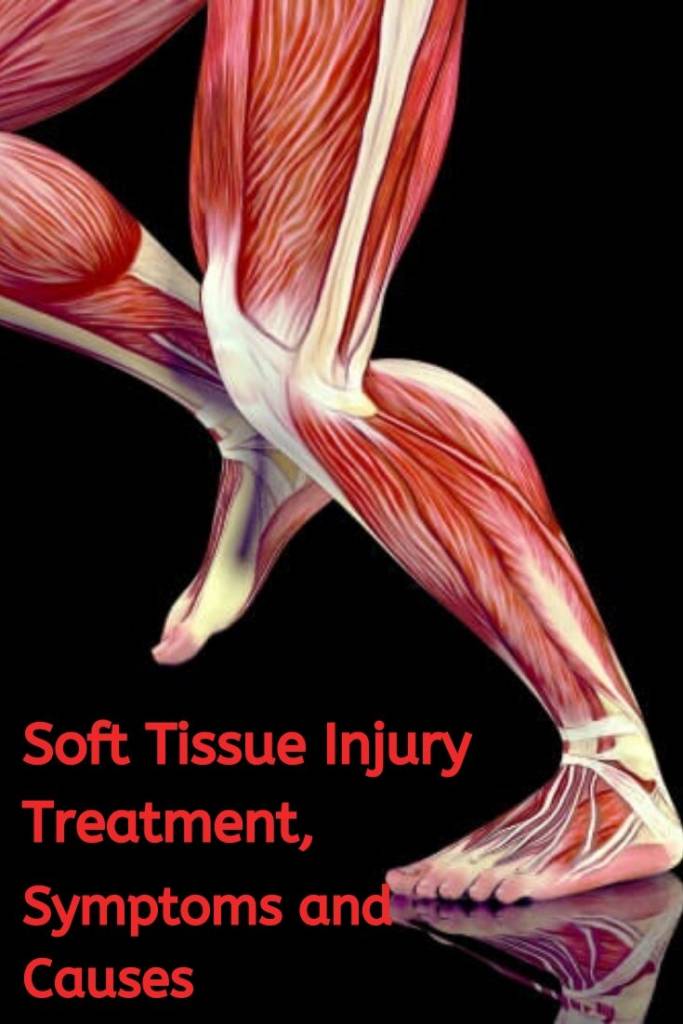The soft tissue injury can happen due to several reasons. Learn its symptoms and know which treatment would be the best in your case.
Within the soft tissues are tendons, ligaments and muscles. The acute injuries that suffer most frequently are sprains, strains and bruises. Although they may realize abuse injuries such as tendinitis and bursitis.
Soft tissue injury is one that occurs in the soft parts of the musculoskeletal system. Said system is formed by tendons, ligaments and muscles. The muscle is the compact unit for a set of fibers. These fibers are unable to shorten, by contraction, and stretch due to their elasticity.
On the other hand, the tendon is the part of the muscle that serves as a union between the muscle itself and the bone. Tendons transmit force to the bone to produce movement.
The ligaments have a structure similar to tendons. However, its function is to unite and stabilize the components that form a joint. Soft tissue injury is classified into two basic categories. These are acute injuries and those due to abuse.
Acute injuries
These types of injuries are caused by sudden trauma, such as a fall, a turn or a blow. This category includes sprains, strains and bruises.
Sprain
A sprain is a tear and / or stretch of a ligament. The parts of the body most susceptible to sprains are the ankles, knees and wrists. According to its severity, it is classified as:
- Slight or Grade 1: there is a slight stretch and slight damage to the ligament fibers.
- Moderate or Grade 2: in this grade there is a partial tear of the ligament.
- Severe or Grade 3: there is a total tear of the ligament causing instability and that the joint is not functional.
Although the intensity varies, the bruising pain and swelling and inflammation are common in all three degrees of sprains.
Distension
A strain is a soft tissue injury that is usually caused by excessive use, force, or stretching. In fact, the strains can be from a simple stretch to a partial or complete tear in the muscle and tendon combination. The most common symptoms of a bloating are:
- Muscle spasms
- Cramps
- Muscular weakness
- Inflammation
- Contusion
A bruise is the result of an external force or blow. Due to the rupture of the blood vessels the color change occurs. It can also limit the range of motion.
Treatment of an acute soft tissue injury
The exact treatment depending on the type and severity of it. When an acute injury occurs, the initial treatment that is applied is that which corresponds to the R.I.C.E protocol, acronyms that affect English terms and that result in: rest, ice, compression and exercises.
The rest of the activity that causes the injury is essential along with the application of ice or cold packs for 20 minutes several times a day. In addition, to prevent inflammation, it is advisable to make an elastic compression bandage and while resting, elevate the lesion above the heart.
You should treat mild sprains with R.I.C.E. Moderates often require a period of immobilization and the most severe may require surgery to repair the lesion.
As for the strains, the recommendations are the same as for a sprain: rest, ice, compression and exercises. Do this in addition to simple exercises to relieve pain and restore mobility. Most minor strains responded well to the R.I.C.E.
Soft tissue injury due to abuse
This type of injury occurs gradually over time. They end up appearing when a physical activity is repeated so often that the body does not have enough time to heal. Within this category, tendinitis and bursitis are the most common soft tissue lesions.
Tendonitis
This soft tissue injury is an inflammation or irritation of the tendon or its covering. They are usually due to a series of repetitive efforts that aggressively fight the tendon. Typical symptoms of tendonitis are inflammation and pain that worsens with activity.
Bursitis
Bursas are small jelly bags that are located around the shoulder, elbow, hip, knee and ankle. In fact, they contain a small amount of fluid and are located between the bones and soft tissues. In this way, they act as cushions reducing friction. Bursitis is the inflammation of the bursa and occurs as a result of repeated small efforts.
Read more: See How To Improve Cartilage In Knees, Ligaments And Tendons
Treatment of abuse injuries
In the treatment of tendonitis, the recommendations are to rest, use anti-inflammatory medications and exercise to improve flexibility. However, if the inflammation persists, it can cause significant tendon damage, which may require surgical treatment.
Bursitis can be relieved by changing activity and if necessary the use of anti-inflammatory medications. If it does not improve, it may be necessary to remove the liquid from the bursa.
Don’t forget to SHARE the soft tissue injury types and treatment options with your friends and family on your social networks!

